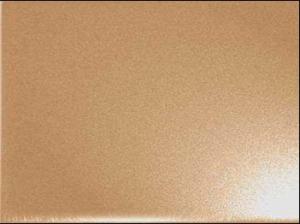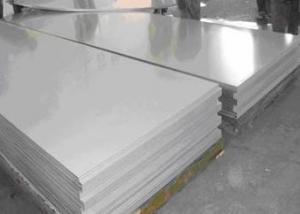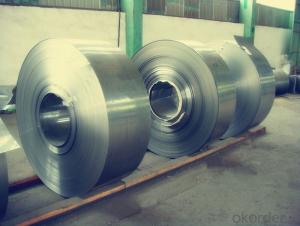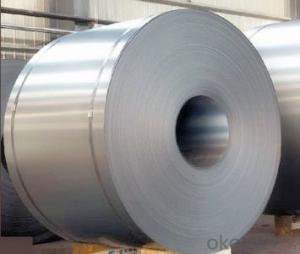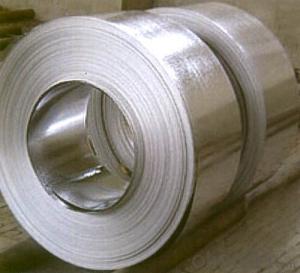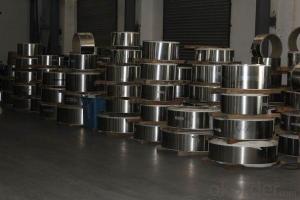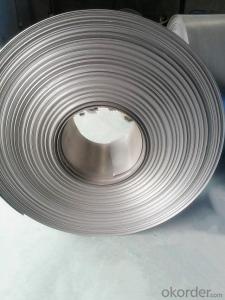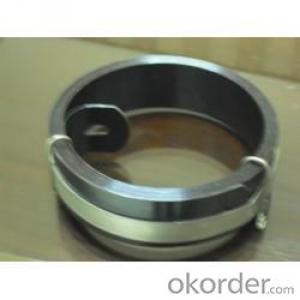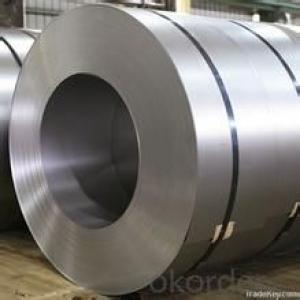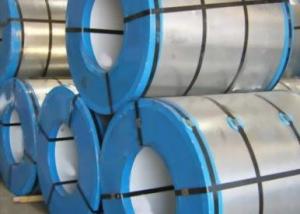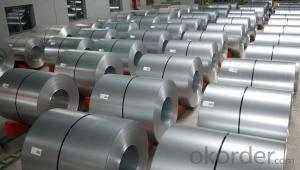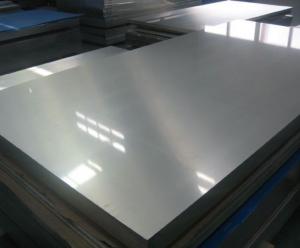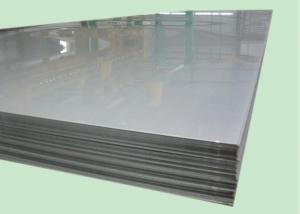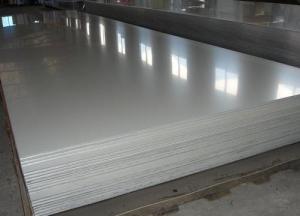Stainless Steel Decorative Coil / Sheet
- Loading Port:
- China Main Port
- Payment Terms:
- TT or LC
- Min Order Qty:
- 20 Ton m.t.
- Supply Capability:
- 20000 ton per month m.t./month
OKorder Service Pledge
OKorder Financial Service
You Might Also Like
Stainless Steel Decorative Coil / Sheet
1.Size: Thickness: 0.3mm ~~ 20mm, Width: 50mm ~~ 1250mm, Length: to be customized.
2.Material:SUS201,202,301,304,304L,316,316L ,321 etc.
3.Standard:AISI,JIS,GB,DIN
4.Finish:mirror, hair line, sand blast, etched, embossed, linen, checkered, tear, golden mirror,
5.Testing:Each heat number and batch must be tested for both chemical and mechanical properties
|
Stainless Steel Coil / Sheet | |
|
Standard |
JIS, AISI, ASTM, GB, DIN, EN |
|
Property |
Stainless steel coil, Stainless steel sheet, Stainless steel plate, stainless steel |
|
Length |
1-12m |
|
Quality |
prime |
|
Manufacturing Process |
factory direct sale |
|
Surface Treatment |
mirror, hair line, sand blast, etched, embossed, linen, checkered, tear, golden mirror, |
|
Main Grade |
201,201,301,302,303,304,321,316,316L,309,310,309H, 310S,431,430,420,430F |
|
MOQ |
20 ton |
|
Trade Term |
FOB China mainport |
|
Payment term |
T/T or L/C |
|
Price |
negotiable |
|
Packing |
Export packing |
|
Dilvery time |
20days or depend on order quantity |
|
Container |
The capacity for a 20" container:20-24tons |
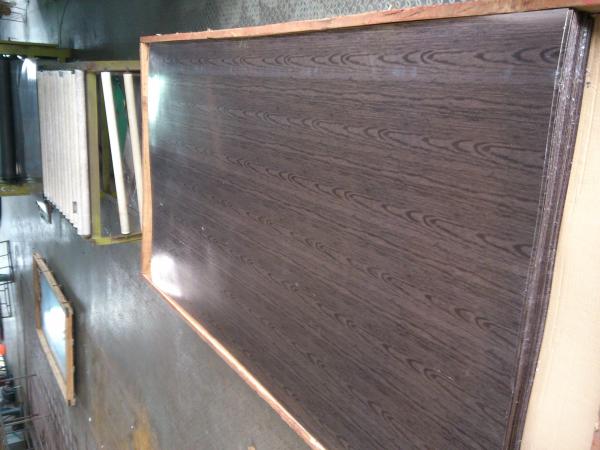
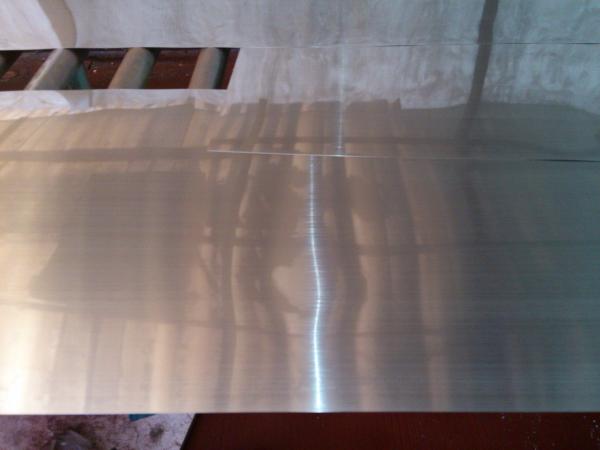
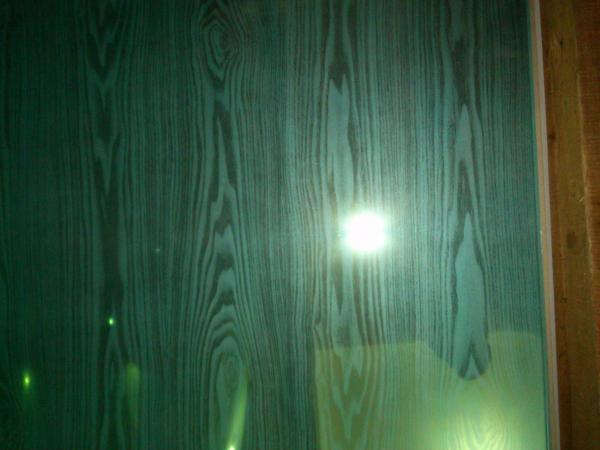
- Q: Are stainless steel strips suitable for outdoor sculptures?
- Yes, stainless steel strips are suitable for outdoor sculptures. Stainless steel is known for its durability, corrosion resistance, and ability to withstand harsh weather conditions. These properties make it an excellent choice for outdoor sculptures as it can withstand exposure to moisture, UV rays, and temperature fluctuations without rusting or deteriorating. Additionally, stainless steel's sleek and modern appearance can enhance the aesthetic appeal of outdoor sculptures.
- Q: How do stainless steel strips perform in acidic environments?
- In acidic environments, stainless steel strips possess a high resistance to corrosion, making them an ideal material for usage. The inclusion of chromium in stainless steel results in the creation of a protective layer, known as a passive film, on its surface. This passive film functions as a barrier, shielding the underlying steel from the damaging effects of the acid. Furthermore, stainless steel also contains other alloying elements like nickel and molybdenum, further bolstering its ability to withstand corrosion in acidic environments. As a result, stainless steel strips display remarkable durability and performance when exposed to acidic conditions, rendering them the preferred choice in a wide range of applications including chemical processing, food processing, and marine environments.
- Q: What is the fracture toughness of stainless steel strips?
- The fracture toughness of stainless steel strips varies depending on the specific grade and composition of the stainless steel. Stainless steel is known for its high strength and toughness, making it resistant to fractures. However, the fracture toughness value can be influenced by factors such as the heat treatment, processing conditions, and any alloying elements present in the stainless steel. To determine the fracture toughness of a specific stainless steel strip, it is necessary to perform laboratory tests such as the Charpy or Izod impact tests or the J-integral test. These tests involve subjecting the material to controlled loading conditions and measuring the energy absorbed by the material before it fractures. The fracture toughness of stainless steel strips is typically characterized by the KIc value, which represents the critical stress intensity factor required for crack propagation. This value indicates the resistance of the material to fracture under a specific loading condition. Higher KIc values indicate greater fracture toughness. In general, stainless steel strips exhibit good fracture toughness due to their high strength and ductility. However, it is important to consider the specific grade and processing conditions of the stainless steel strip in order to accurately determine its fracture toughness.
- Q: What are the factors affecting the creep resistance of 111 stainless steel strips?
- The factors affecting the creep resistance of 111 stainless steel strips can be numerous and include: 1. Composition: The chemical composition of the stainless steel strips, including the presence of alloying elements such as chromium, nickel, and molybdenum, can significantly impact its creep resistance. Higher levels of these elements generally improve resistance to creep deformation. 2. Microstructure: The microstructure of the stainless steel strips, including the size, distribution, and stability of the various phases and grain boundaries, can influence creep resistance. A fine and uniform grain structure with minimal grain boundary sliding is desirable for improved creep resistance. 3. Temperature: Creep resistance decreases as temperature increases. Higher temperatures promote the diffusion of atoms, resulting in increased creep deformation. Therefore, stainless steel strips intended for high-temperature applications should be designed to withstand the specific temperature range without significant creep deformation. 4. Stress level: The applied stress or load on the stainless steel strips can affect creep resistance. Higher stress levels can accelerate creep deformation, leading to reduced creep resistance. It is important to consider the stress levels that the strips will be subjected to during their intended service life. 5. Time: Creep resistance is time-dependent, meaning that the longer the stainless steel strips are subjected to a constant load or stress, the more susceptible they are to creep deformation. Therefore, the duration of the applied load or stress should be considered when assessing the creep resistance of 111 stainless steel strips. 6. Surface condition: The condition of the stainless steel strip's surface, including the presence of defects, scratches, or surface roughness, can influence its creep resistance. A smooth and defect-free surface can help minimize stress concentration and reduce the likelihood of localized creep deformation. 7. Environmental factors: The presence of aggressive environments, such as high-temperature gases or corrosive substances, can affect the creep resistance of stainless steel strips. Corrosion or oxidation can lead to the degradation of the material, reducing its creep resistance. 8. Heat treatment: The heat treatment process used during the manufacturing of stainless steel strips can significantly impact their microstructure and, consequently, their creep resistance. Proper heat treatment procedures, including annealing, quenching, and tempering, can optimize the material's creep resistance properties. It is important to note that these factors are interrelated and should be considered together when evaluating the creep resistance of 111 stainless steel strips.
- Q: Can stainless steel strips be used in the production of automotive body panels?
- Automotive body panels can indeed incorporate stainless steel strips. This material is widely chosen for its remarkable resistance to corrosion, as well as its strength and durability. It can easily withstand harsh environmental conditions, such as salt, moisture, and chemicals, which makes it perfect for automotive applications. Moreover, stainless steel is highly malleable and can be shaped into intricate curves and angles required for body panels. Its attractive finish also adds to the overall aesthetics of the vehicle. Consequently, stainless steel strips are extensively utilized in the production of automotive body panels, providing a blend of strength, longevity, resistance to corrosion, and visual allure.
- Q: Are 111 stainless steel strips resistant to pitting and crevice corrosion?
- Yes, 111 stainless steel strips are resistant to pitting and crevice corrosion.
- Q: Can stainless steel strips be used in medical devices?
- Yes, stainless steel strips can be used in medical devices. Stainless steel is a common material used in the manufacturing of medical devices due to its unique properties. It is corrosion-resistant, which is essential for medical devices that come into contact with bodily fluids and tissues. Stainless steel also has high strength, durability, and excellent biocompatibility, making it suitable for various medical applications such as surgical instruments, implants, and diagnostic equipment. Additionally, stainless steel can be easily sterilized, ensuring the safety and effectiveness of medical devices.
- Q: Can stainless steel strips be used in chemical storage tanks?
- Yes, stainless steel strips can be used in chemical storage tanks. Stainless steel is known for its corrosion resistance properties, which makes it suitable for storing various chemicals. It provides resistance to a wide range of corrosive substances, including acids, bases, and solvents. Additionally, stainless steel has excellent strength and durability, allowing it to withstand the harsh conditions often found in chemical storage tanks. Its inert nature also ensures that it does not react with the stored chemicals, thus preserving the integrity of the stored materials. Overall, stainless steel strips are a popular choice for chemical storage tanks due to their corrosion resistance, strength, and durability.
- Q: Are stainless steel strips suitable for chemical tanks?
- Indeed, chemical tanks can indeed be made with stainless steel strips. Stainless steel is a highly favored choice when it comes to selecting materials for chemical tanks, primarily due to its remarkable resistance to corrosion and impressive durability. It possesses the ability to endure and withstand exposure to a broad range of chemicals, including acids, bases, and solvents, without succumbing to corrosion or degradation. Furthermore, stainless steel boasts ease of cleaning and maintenance, making it an optimal and sanitary option for the storage and transportation of chemicals. The exceptional strength and structural integrity of stainless steel strips additionally guarantee that the tanks can endure the pressures and stresses encountered in chemical processing applications. All things considered, stainless steel strips are a dependable and appropriate choice as a material for chemical tanks.
- Q: How do stainless steel strips perform in high temperature environments?
- Stainless steel strips are known for their exceptional performance in high temperature environments. Due to their inherent properties, stainless steel strips exhibit excellent resistance to oxidation and scaling at elevated temperatures. This is primarily due to the presence of chromium in the steel, which forms a protective oxide layer on the surface when exposed to air, preventing further corrosion. In high temperature environments, stainless steel strips retain their strength and integrity, making them suitable for a wide range of applications. They can withstand thermal cycling without significant degradation, ensuring long-term performance and reliability. Additionally, stainless steel strips possess good mechanical properties at elevated temperatures, including high tensile and creep strength. This makes them ideal for applications where high temperatures and mechanical stresses are involved, such as in heat exchangers, furnaces, and automotive components. Moreover, stainless steel strips offer excellent thermal conductivity, allowing for efficient heat transfer and distribution. This is particularly important in high temperature environments, as it helps to maintain consistent temperatures and prevent hot spots or thermal stress. Overall, stainless steel strips have proven to be a reliable and durable material in high temperature environments. Their resistance to corrosion, mechanical strength, and thermal conductivity make them a popular choice across various industries, ensuring optimal performance and longevity even under extreme conditions.
1. Manufacturer Overview
| Location | Zhejiang,China |
| Year Established | 2010 |
| Annual Output Value | Above US$16Million |
| Main Markets | Japan, South America |
| Company Certifications | ISO9001:2000; |
2. Manufacturer Certificates
| a) Certification Name | |
| Range | |
| Reference | |
| Validity Period |
3. Manufacturer Capability
| a) Trade Capacity | |
| Nearest Port | Shanghai |
| Export Percentage | 60% |
| No.of Employees in Trade Department | 50 People |
| Language Spoken: | English;Chinese; Japanese |
| b) Factory Information | |
| Factory Size: | Above 80,000 square meters |
| No. of Production Lines | Above 8 |
| Contract Manufacturing | OEM Service Offered;Design Service Offered |
| Product Price Range | Average |
Send your message to us
Stainless Steel Decorative Coil / Sheet
- Loading Port:
- China Main Port
- Payment Terms:
- TT or LC
- Min Order Qty:
- 20 Ton m.t.
- Supply Capability:
- 20000 ton per month m.t./month
OKorder Service Pledge
OKorder Financial Service
Similar products
Hot products
Hot Searches
Related keywords
